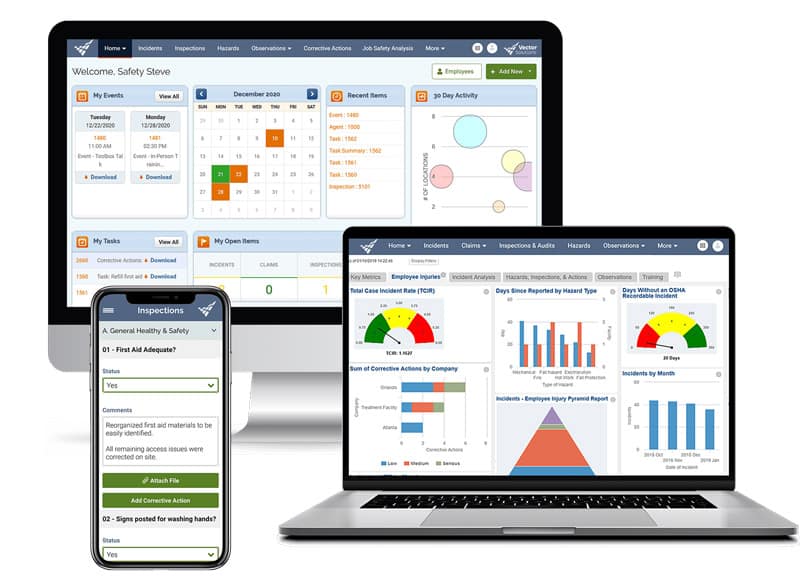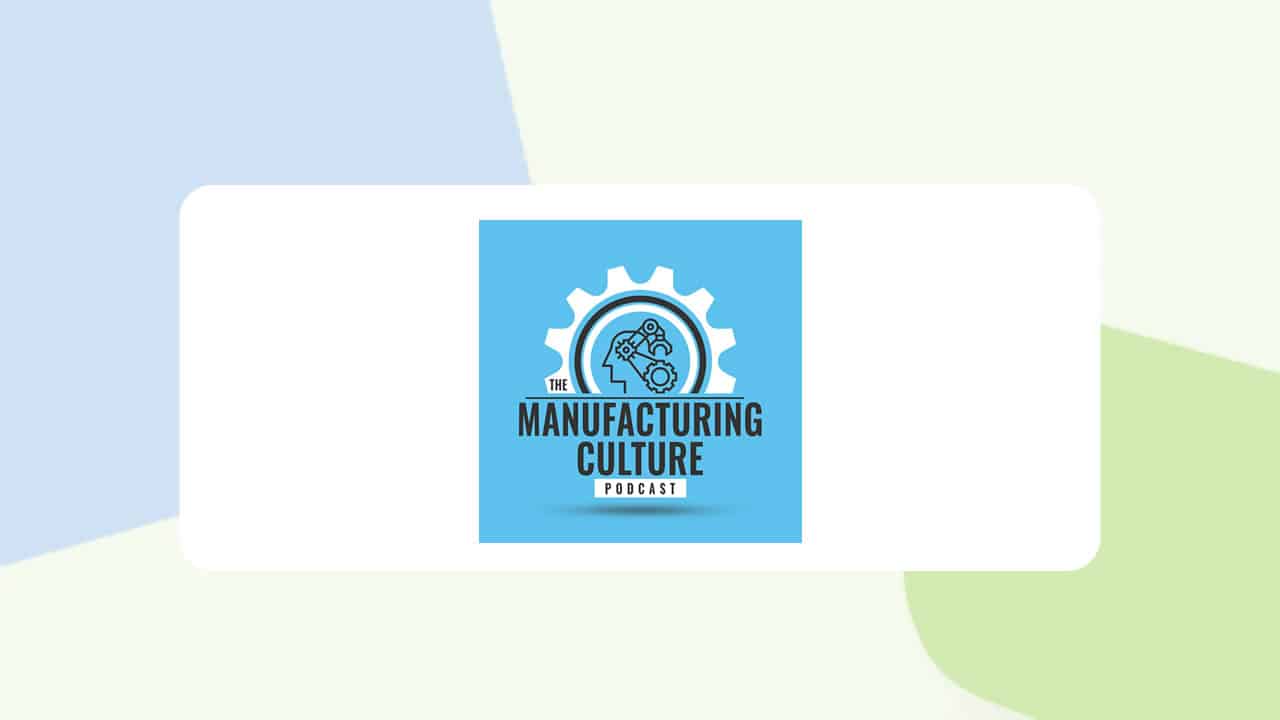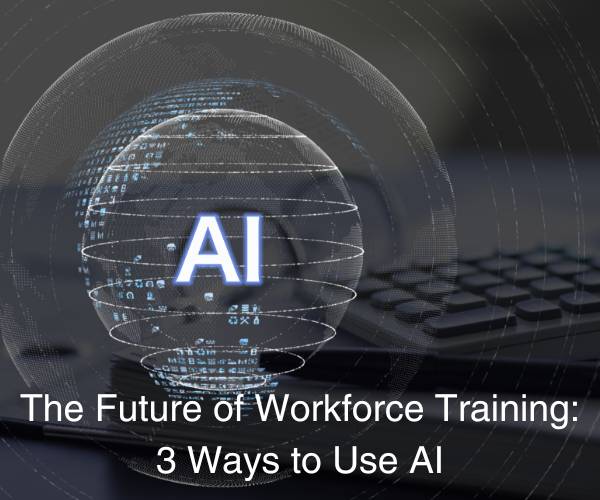April 15, 2025 1 min read
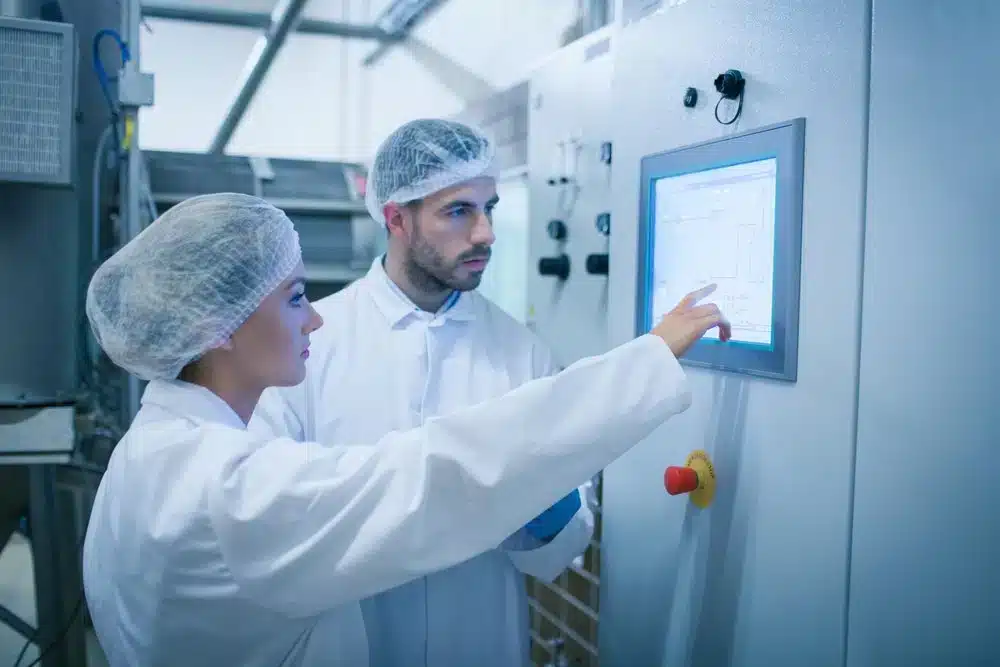
Hazards in Food Processing Industry: A Guide
Industry:
Solution:

How should food workers prevent physical hazards, chemicals, and other risks associated with food processing? Let’s explore the risks employees face, and strategies plants can implement to enhance safety.
Key takeaways:
- Workers in the food processing industry face a wide range of hazards—including chemical, biological, and physical hazards—that can impact their health and safety.
- Preventing injuries requires proactive strategies, including proper training, use of PPE, machine guarding, and adherence to food processing standards.
- Creating a culture of safety in food processing industry facilities helps protect workers, reduce downtime, and ensure compliance with OSHA and other regulatory bodies.
Occupational Hazards in the food processing industry
Employees in the meat or food processing industries face numerous health and safety risks on the job. Some of these many risks include:
| Types of Hazard | How Workers Are Impacted | Hazard Examples |
|---|---|---|
| Noise | Food processing industry machinery often operates at high noise levels, require frequent wash downs, and can be more susceptible to mold and vermin. The combination of these factors may make high noise levels more challenging to re-mediate than in other industries. | Loud machinery, compressors, conveyors, and packaging lines. |
| Ergonomic | Like many jobs requiring repetitive motion, workers in food processing plants may be susceptible to musculoskeletal disorders. | Repetitive cutting, packing, or sorting tasks on production lines. |
| Physical | Frequent wash downs required by food processing standards create slippery surfaces that put workers at risk for slips and trips, causing injury. | Wet floors from wash downs, cluttered walkways, poor lighting. |
| Chemical | Food processing workers routinely utilize chemical cleaning and sanitation agents to help keep food free of unwanted microorganisms and other contaminants. As well, processes include the use of refrigerants such as ammonia which can be highly dangerous even in small quantities. | Cleaning agents, ammonia refrigerants, sanitizers. |
| Equipment | Industrial food processing equipment can place workers at risk for amputations or other injuries unless organizations focus on ensuring proper machine guarding and Personal Protective Equipment (PPE). | Meat slicers, grinders, mixers, and packaging machines. |
| Biological | Unique to poultry processing, workers may be exposed to biological hazards associated with handling live birds or exposures to dust and feces. | Handling live poultry, exposure to feces or blood, airborne pathogens. |
Additionally, stressful, fast-paced work environments can lead to accidents of varying degrees of severity. For more detail on general manufacturing hazards check out our popular top five hazards in safety manufacturing blog post.
Numerous organizations throughout the food processing industry rely on Vector EHS Management Software to improve workplace safety.
Hazard Controls to Increase Safety in Food Processing Industry Practices
To protect their workers from harm, employers are required to establish engineering controls for dangerous equipment, safe food processing standards, and emergency response programs. They also must make proper personal protective equipment (PPE) readily available for any employee who will be working in a dangerous area or operating heavy machinery and train their employees on the applicable PPE. Other controls include maintaining walking/working surfaces to prevent slips, machine guarding, and ergonomics programs.
Employers should also provide appropriate training to their employees, equipping them to handle the many health and safety hazards in food manufacturing.
Common training for workers includes:
- Personnel Protective Equipment
- Danger of extreme temperatures (hot and cold)
- Incident Investigation
- Material Handling in compliance with OSHA’s Hazard Communication Standard (especially for the chemicals listed above)
In addition to training, food safety professionals can also hold regular toolbox talks to brief workers on the risks they may encounter while performing their daily tasks.
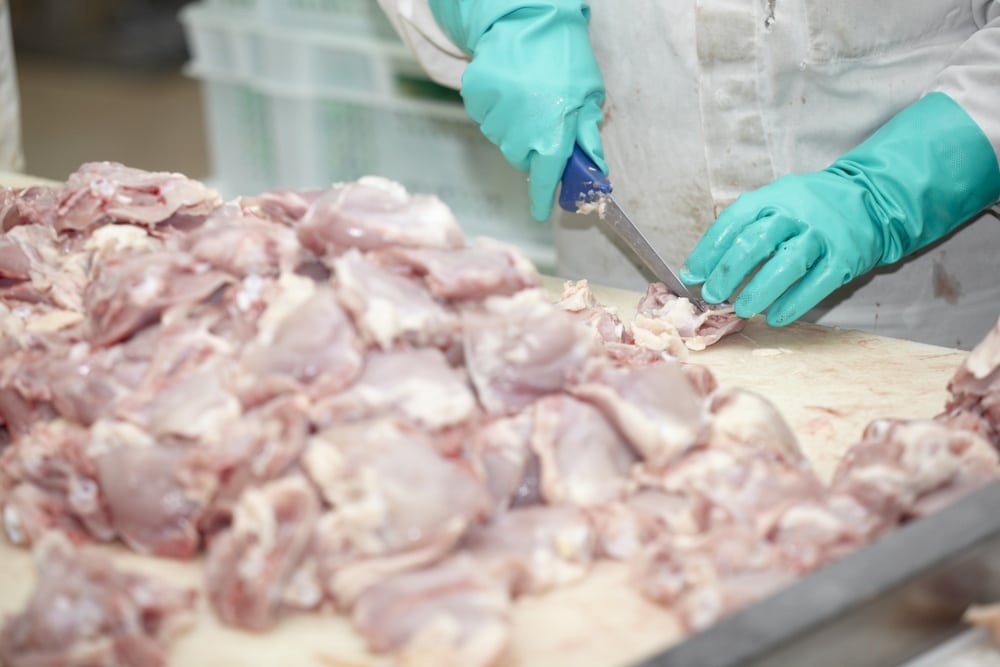
How Employers Endanger Workers at Food Processing Facilities
Despite the well-known hazards in food processing, employers across the U.S. continue to expose workers to preventable injuries—often with devastating consequences.
In 2023, OSHA cited Zwanenberg Food Group USA in Cincinnati after a 29-year-old temporary worker suffered a finger amputation while cleaning a meat grinder that lacked required safety guards. The company faced $242,197 in proposed penalties and had previously been cited for similar violations, including a 2022 incident where another worker lost a leg in an industrial blender. OSHA Area Director Ken Montgomery emphasized, “Zwanenberg Food Group needs to change their workplace culture and make worker safety a priority” .
At JBS Green Bay Inc., a December 2022 inspection revealed that a worker suffered crushing injuries to his fingers due to inadequate machine guarding on a trolley line. OSHA cited the company for multiple violations and proposed $227,786 in penalties. “JBS Foods is well aware of these typical industry hazards and of their legal obligation to provide employees with a safe and healthful workplace,” stated OSHA Area Director Robert Bonack .
In Wisconsin, Abbyland Foods Inc. was cited after two workers suffered severe hand injuries in separate incidents involving unguarded machinery. OSHA proposed $277,472 in penalties, noting the company’s history of similar violations. “After a decade of citations for nearly two dozen serious violations, Abbyland Foods continues to ignore its legal responsibility to ensure a safe and healthful work environment,” said Bonack .
Chemical hazards also persist. In January 2024, Schoep’s Ice Cream in Madison, Wisconsin, was cited for 12 violations after an ammonia leak exposed workers to dangerous conditions. OSHA found the company failed to maintain proper safety procedures and equipment, proposing $145,000 in penalties. “Employers must continually evaluate their engineering processes and train workers on how to safely operate equipment,” explained OSHA Area Director Chad Greenwood .
These recent cases underscore a troubling pattern: when employers neglect safety protocols, workers pay the price. It’s imperative that companies prioritize the health and safety of their employees by adhering to established regulations and fostering a culture of accountability.
Frequently Asked Questions
Q: What Physical Hazard Examples in Food Processing Are Preventable with Increased Training?
A: Slips, trips, falls, and machine-related injuries are common physical hazards in food processing. With increased training on safe equipment operation, machine guarding, and hazard recognition, employees can significantly reduce these risks. Training also reinforces the importance of PPE use and good housekeeping to prevent injuries from wet floors or cluttered areas.
Q: How Do Biological Hazards in Food Industry Processes Impact the Health of Workers?
A: Biological hazards—such as bacteria, viruses, or exposure to animal waste—can lead to respiratory issues, infections, and long-term illnesses. Poultry and meat processing workers are especially at risk. Without proper hygiene practices, PPE, and training, employees may experience severe health effects from handling contaminated materials or working in unsanitary conditions.
Q: How Can Chemical Hazards in Food Industry Practices Impact the Broader Public?
A: Improper use or containment of cleaning chemicals, ammonia refrigerants, or sanitizers can result in product contamination or facility-wide chemical leaks. These hazards not only harm workers but also pose a threat to public health through foodborne illness outbreaks or environmental contamination, emphasizing the need for stringent safety and training protocols.
Help Employees Better Manage Food Processing Plant Hazards with Vector Solutions
Vector Solutions can help employers manage the hazards in food processing industry practices with our job safety analysis modules, exposure and chemical risks with our Industrial Hygiene monitoring software, and provide applicable training content for food processors.
Request a Demo to learn more about our safety management software.
